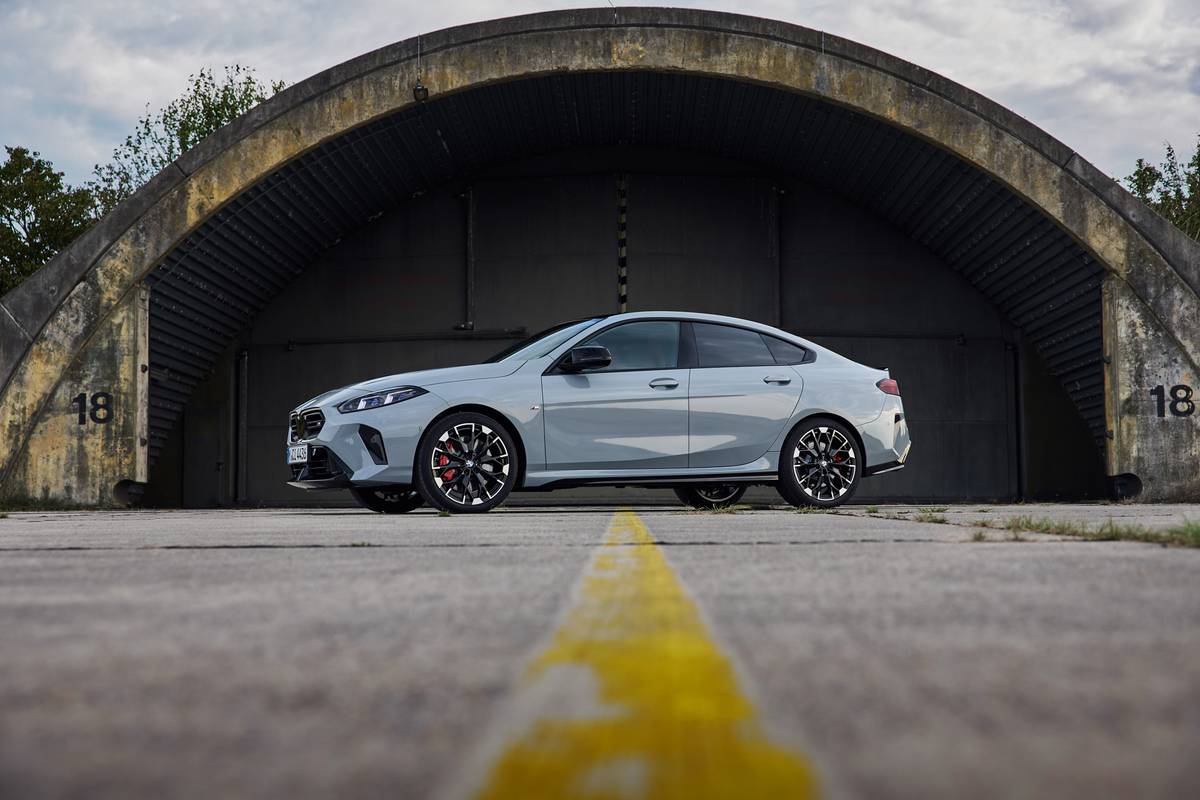AZCentral.com's view
As gas prices soar and the brown cloud thickens, Prius is Toyota’s quite plausible answer to the question of what people should be driving, if they happen to care about such things. The Prius is a hybrid, powered by a small gasoline engine that is boosted under acceleration or hill climbing by an electric motor. The motor also performs such mundane tacks as backing up or starting off from a standstill. Prius performs like a regular car, but gets a huge number of miles out of a gallon of gas while cutting back on pollutants. It’s rated at 52 miles per gallon in the city, 45 on the highway. No, that’s not a misprint. It actually gets better gas mileage traveling around town at lower speeds. The best thing about the Prius is that there are practically no compromises. A compact sedan with a normal four-seat configuration and a usable trunk, Prius is a real-world car with a roomy interior that could be used by most small families. This contrasts sharply with Honda’s notable hybrid effort, the sporty Insight, a sub-compact two-seater that is more fun to drive than Prius but is more limited in practicality. The Insight does have the advantage of being pretty cool to look at or be seen in, while the styling of the tall, bulbous Prius is something of an acquired taste. I liked it after a few days, but for a middle-age guy, it is kind of nerdish.
So far, Insight and Prius are the only hybrids offered by major automakers in the United States. But more are certain to follow because of economy and air-pollution benefits. Ford reportedly has penned a deal with Toyota for a hybrid drive system for the compact Escape HEV sport utility vehicle. DaimlerChrysler may soon offer hybrid power for its Dodge Durango.
Not that hybrid power is the end-all. Most automotive types agree that it is a stopgap, the ultimate goal being zero-pollution hydrogen. Vehicles powered by hydrogen could be out by the end of this decade, according to the German engineers who recently brought a hydrogen fuel-cell Opel to the General Motors Desert Proving Ground. But for now, hybrids are the next-best thing. Obviously, Prius’ gas-sipping ways makes it a good commuter car. Although the interior is spartan, it’s also airy and comfortable enough for long drives.
My only real beefs about Prius concern the dashboard array. It is center-mounted, which doesn’t bother me, but between the glaring video screen, digital speedometer, randomly scattered stereo controls and a dash-mounted shifter that blocks some controls, I found the whole mess to be confusing and annoying.
The video screen is multifunctional, providing a continuous readout of hybrid-driveline operation, which is fun and informative. At first. But I’m sure after a few months, the array would be turned off forever since it doesn’t add much to the driving experience. Although the weather was fairly balmy when I was road-testing the Prius, I could tell that the air-conditioning syst em was working full-time to cool the cabin. On a 115-degree day, I don’t think it’s going to cut it, especially at idle.
Prius drives pretty nicely and corners well, although those hard, low-resistance tires don’t grip as well as regular radials. The hybrid cruises ably on the freeway, settling down to a quiet 75 mph.
When driving, certain things happen that make you aware that Prius is not a regular car. First off, the automatic transmission uses a CVT variable gear system, which means it doesn’t shift but keeps the engine turning at the optimum speed for the circumstances. It works well enough, but there are unfamiliar surges in engine rpm, especially under acceleration, that makes it feel disconnected. The electronic braking system, which helps generate power for the batteries, also takes getting used to.
At idle, there are a few rumbles and low noises that come and go as the gas engine kicks in to keep the batteries charged for the electric motor. Of urse, that also denotes the biggest difference between a hybrid car and a pure electric car: You never have to plug it in for a recharge. Just fill it with gas and go. Prius is pretty much like a regular car, which is a good thing. It’s accommodating, fun, highly economical and environmentally sensitive. Let’s hope it’s the start of a trend.
Latest news



